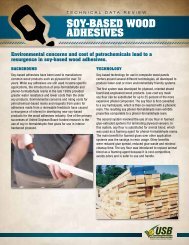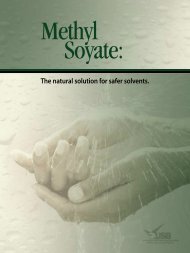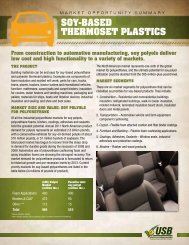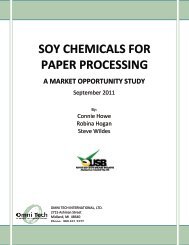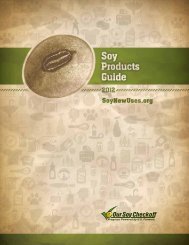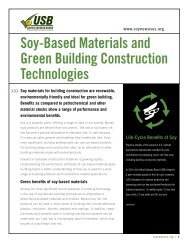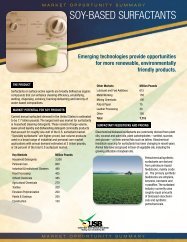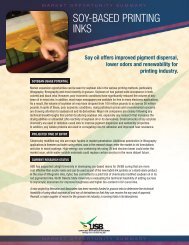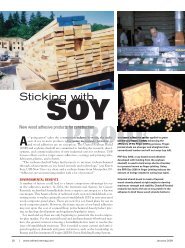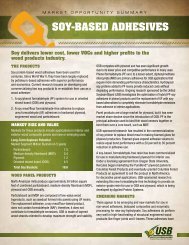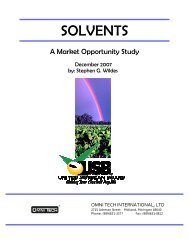Surfactants Market Opportunity Study - January 2009 - Soy New Uses
Surfactants Market Opportunity Study - January 2009 - Soy New Uses
Surfactants Market Opportunity Study - January 2009 - Soy New Uses
You also want an ePaper? Increase the reach of your titles
YUMPU automatically turns print PDFs into web optimized ePapers that Google loves.
ISSUE ANALYSIS<br />
ENVIRONMENTAL AND REGULATORY ISSUES<br />
ENVIRONMENTAL REGULATION<br />
The surfactant industry is facing challenging environmental, regulatory and consumer<br />
pressure on the production, exposure, packaging, handling, transporting, use and<br />
disposal of its products. Surfactant product protection and safety is regulated by the<br />
U.S. EPA and other federal, state and local agencies regarding product toxicity,<br />
flammability and volatility. In addition, surfactants used in food processing applications<br />
are regulated by the Food and Drug Administration (FDA) and surfactants with biocidal<br />
claims must be registered under the Federal Insecticide, Fungicide and Rodenticide Act<br />
(FIFRA).<br />
Other environmental regulations impacting surfactant suppliers and end users include<br />
the Clean Water Act, the Clean Air Act, the Resource Conservation and Recovery Act<br />
(RCRA), the Toxic Substances Control Act (TSCA) and the Occupational Safety and<br />
Health Administration (OSHA) standards. More recently, a number of consumer<br />
product certification organizations have influenced product environmental acceptability –<br />
Clean Gredients, Green Seal, EPA’s Design for the Environment Program, EcoLogo,<br />
Eco-Label, GreenGuard, Nordic Swan and EcoCert. Also, the impact of the European<br />
REACH (Registration, Evaluation, Authorization and Restriction of Chemicals) program<br />
is growing.<br />
THE “GREEN” PRODUCT MOVEMENT<br />
Throughout the surfactant industry, there is significant new consumer market driven<br />
demand for natural, renewable-based products that are more environmentally friendly.<br />
Consumers and major retailers of surfactant-containing products want “wellness” and<br />
“sustainability” in addition to product performance. This new influence has come on<br />
strongly in the last two years, on top of concern for rising raw material and energy costs<br />
and the growing requirement to have cleaning products “certified” as safe.<br />
This new market driven influence has resulted in some major purchasers of surfactantcontaining<br />
products banning specific surfactants. In 2006, Wal-Mart North America<br />
began phasing out a list of suspect chemicals including APE (alkyl-phenol ethoxylates).<br />
Cintas Corporation, a major industrial launderer, banned NPE (nonyl-phenol<br />
ethoxylates) detergents in 2008 and Levi Strauss began a ban on NPE use. Many<br />
producers of formulated cleaning products have responded to these initiatives by<br />
eliminating APEs from their products, replacing the surfactants with natural, renewable<br />
oleo-based products such as methyl ester sulfonates (MES) from soy or palm oil or<br />
seed oil-based alcohol ethoxylates. Major cleaning product manufacturers -<br />
JohnsonDiversey, Ecolab and Reckitt Benckiser - have phased APEs out of their<br />
formulations.<br />
38



